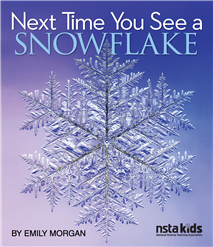All Teaching Strategies resources
Journal Article
Direct experiences in the living world are a major ally in helping students understand biology and the practice of science, and in fostering a lifelong love for nature. The positive impact of field study on students’ experiences and outcomes, and t...
By Barry McPhail
Journal Article
Impact of the Timing of Content Introduction on Student Exam Performance in General Chemistry
Students come into the classroom with a variety of background knowledge. Therefore, it is imperative that educators are able to help all students, regardless of their familiarity with the content. Since it can be challenging for some large enrollment...
By Anthony Howcroft, Daniel King
Journal Article
The Connection Between Drawing Organic Structures and Information Processing
Students need a strong understanding of how to represent chemical compounds in order to succeed in organic chemistry. This project set out to gain a better understanding of students’ difficulties with symbolic representations, by identifying the sp...
By Suzanne Ruder, Courtney Stanford, Nuha Farhat, Leslie Bolda
Journal Article
Science Learning in YouTube Comments on Science Videos Embedding Movie References
Movies have long been used for teaching in undergraduate science courses. However, embedding movie references (EMR) in science videos is a new trend. This study explored how EMR in YouTube science videos might affect the nature of comments and the pr...
By Chung Man Lee, Eric Meyers, Marina Milner-Bolotin
Journal Article
Effect of voluntary clicker participation on General Chemistry performance
Mixed results have been reported on the correlation between clickers and performance. This study investigates the usage of clickers in a voluntary context. Scores on an internal chemistry placement exam were used to estimate cognitive ability, as a f...
By Rayza Rosa Tavares Rodrigues, Daniel King
Journal Article
Increased Pre-Lecture Reading and Greater Attendance at a Community College Gateway Science Course
Gateway science courses are an ongoing obstacle to recruitment into STEM fields (Science, Technology, Engineering, and Mathematics). Students come to these courses with a high cognitive load, making success in the course challenging. Instructional de...
By Daniel Gertner, Allie Brashears, Na Xu, Holly Porter-Morgan
Journal Article
Evidence-based pedagogies to improve STEM student success are now recognized, but their successful incorporation can be hampered by STEM faculty wariness of novel pedagogical research. To support these pedagogies’ effective implementation, a resear...
By Nisaa Kirtman, Cary Smith, Teresa Demeritte, Debra Divinity, Vida Amouzandeh, Jo Anne Fordham, Mehri Fadavi
Journal Article
As introductory college science courses transition from large, passive lectures to more student-centered active learning environments, additional instructional support may be needed. Peer Learning Assistants (PLAs) can aid course transformations by h...
By Brittney Ferrari, Peyton LaBonte, Julie Kittleson
Journal Article
Developing Critical Thinking in Biology Through Progressive Writing Assignments
Critical thinking is essential in academia and the workforce. Although writing can be used as a pedagogical tool for fostering deeper subject matter understanding, increased retention, and critical thinking, relatively few science courses are writing...
By Irene Guttilla Reed, Michelle Kraczkowski, Steven Pearlman
Journal Article
Differences in perception of peer interactions in student-centered STEM courses
A study was done at a mid-sized public university in the Midwest of the United States. At this university, there are three large classes taught in Student-Centered Active Learning Environment with Upside-down Pedagogies (SCALE-UP) classrooms: algebra...
By Alison Page, Jennifer Blue
Journal Article
Engaging Middle School Students with the Nature of Particles, Waves, and Light
This three-day unit engages students in the exploration of light behavior and makes connections to the advanced idea of the wave-particle duality of light. Students begin by exploring the behaviors of marbles (particles) as they interact with differe...
By Isaiah Kent-Schneider, Jerrid Kruse, Dan Chibnall, Paige Anderson, Emma Richards, Brooke Christenson
Journal Article
My Students Read Like Scientists. Now Yours Can, Too!
While hands-on activities are important in science, students must have the opportunity to process the ideas and information that stem from those activities. Minds-on science activities, such as literacy integration, support making connections between...
By Mesa Davis, Kadir Demir
Journal Article
Journey of the Monarchs: Studying North America’s Nomadic Butterfly
Citizen Science November/December 2024...
By Jill Nugent
Journal Article
Flipped Science Classrooms and the Cornell Note-Taking Method
The flipped classroom is a relatively new innovation in teaching middle school science; however, students often struggle with taking notes that provide metacognitive cues and reinforce understanding. This paper describes the structure of a flipped mi...
By Edward Miller, Angela Kelly
NSTA Kids
Click here to view video of Next Time You See a Snowflake This book will have you seeing snowflakes in a whole new way. You’ll learn about the science of snowflakes – how they form, why they are six-sided, what conditions are necessary for the...



